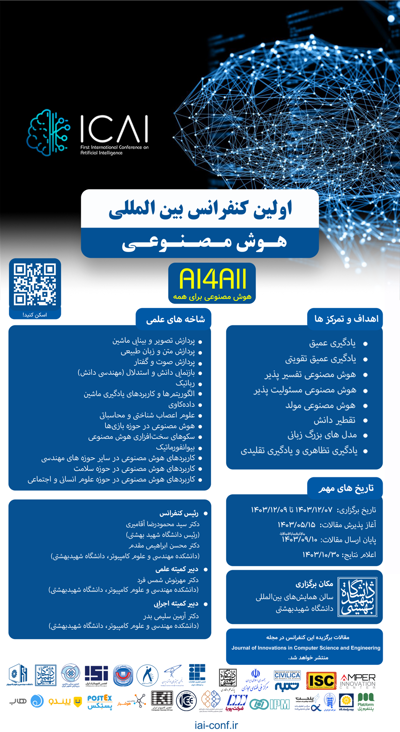0% Complete

نویسندگان :
کلمات کلیدی :
چکیده :
لیست مقالات بایگانی شده
Mohammad Shojaeinia - Hamid Moghaddasi
Ali Heirani-Tabas - Pegah Nejat - Mehrnoosh Shamsfard - Sina Mahmudian
Rahim Mohebbi Gargari - Ali Shalbafan - Seyed Jalil Alavi - Maryam Amirmazlaghni - Seyed Hamzeh Sadatnejad - Heiko Thoemen
Maryam Moradi - Sima Emadi
Sahar Farazi - Yasser Shekofteh
Sajjad Hashemian Meymandi - Mohammad Saeed Arvenaghi
Melika Arabzadeh - Kimia Maleki - Bijan Bambai - Hossein Azad
Mahdi Asghari - Alireza Talebpour - Ghasem Darzi
Mahsa Yaghoobi - Abbas Mirzaei - Babak Nouri-Moghaddam
Ali Rahmanipur - Shakila Mohammadi

